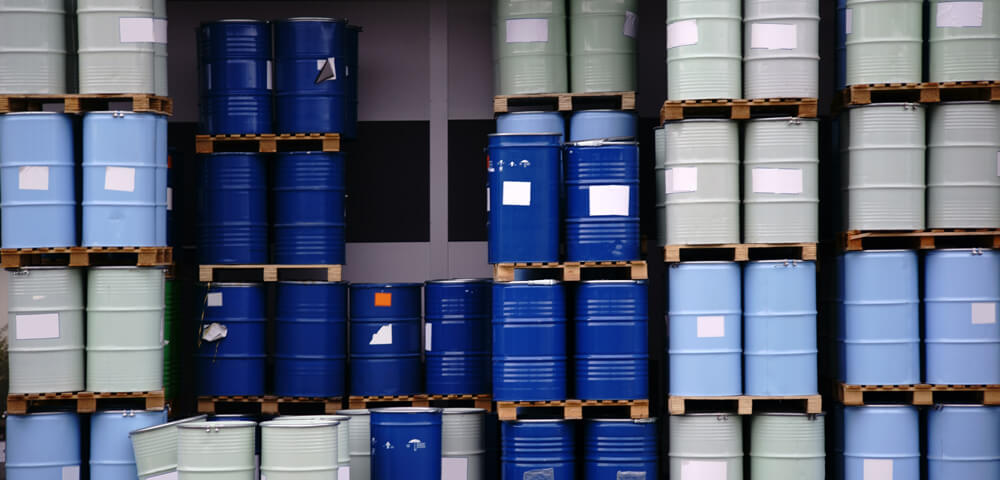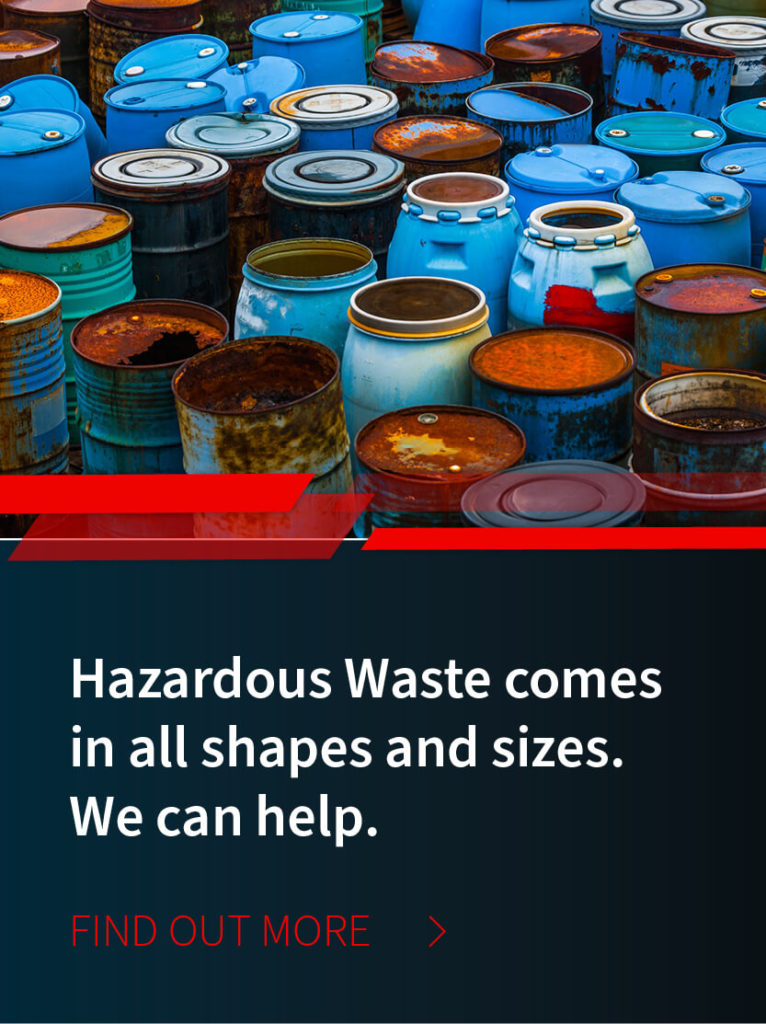
/ IN THIS BLOG
If you generate any hazardous materials in your line of work, it's imperative you know your EPA generator status. Whether you're a large quantity generator or a conditionally exempt small quantity generator or in between, your status dictates important aspects of how you store, transport, and report on your waste. Failure to comply with federal and state regulations and laws that apply to your status could result in steep fines.
01 / Waste Generator Categories
In order to accurately identify your generator status, you must know what factors determine your status with the Environmental Protection Agency (EPA). To that end, the EPA provides detailed information and rules for waste generators producing any amount of hazardous waste.
Not only does a hazardous waste generator need to know the volume or weight of hazardous waste produced every month, but the limitations on how long that waste can be stored on-site before it must be shipped off.
The EPA defines waste generator categories as follows:
Conditionally exempt small quantity generator: Less than 220 pounds
Very small quantity generator (VSQG): Produce 100 kg or less per month and less than one (1) kg per month of acutely hazardous waste (Review 40 CFR §262.14)
Small quantity generator (SQG): Produce 220 pounds to 2,200 pounds per month. Special requirements apply. (See 40 CFR §262.16(b)(2) and (3)
Large quantity generator (LQG): Produce more than 2,200 pounds per month and more than one (1) kg per month of acutely hazardous waste. (Review 40 CFR §262 and 268)
In addition to knowing the weight limitations on how much hazardous waste determines generator status, it’s also important to know limits on how long you can store such waste at your facility before it must be transported off-site.
02 / Storage and Shipping Restrictions Based on Generator Status
In addition to weight restrictions for hazardous waste produced by a facility or business, you must also be aware of the limitations regarding storage times. According to the EPA, time limitations are based on generator category status. For example:
Very small quantity generators and conditionally exempt small quantity generators: no limits or restrictions
Small quantity generators: You may store hazardous waste for 180 days or less without a permit; 270 days or less when transporting more than two hundred miles
Large quantity generator: You may only accumulate hazardous waste on-site for 90 days or less. Be aware that restrictions may apply
The EPA provides a guide for small businesses regarding hazardous waste management that can be found here. Also be aware that some states have different regulations regarding waste generator categories. Read more about them here.
Failure to comply with these shipping times could result in an EPA fine being handed down to your place of business. Fines are accrued daily, per violation, and are quite costly.
03 / Know What Waste Types Count toward Your EPA Generator Status
Only the amount of hazardous material you generate in a given month count toward your generator status limit. Therefore, any non-hazardous waste you create in your facility does not count toward that limit. (This does, however, mean you will need to be able to accurately identify all non-hazardous waste you're generating per month.)
Carefully review the EPA website for detailed information regarding hazardous waste generator basics as well as regulations for hazardous waste categories. Proper identification helps maintain compliance and can save money on storage, transportation, and disposal costs. Hazardous waste identification details can be found in 40 CFR §261.3.
Also verify your state’s policies in regard to hazardous waste management, as they can be more stringent than those of the federal government. Pay special attention to the handling, storage, and disposal of hazardous pharmaceutical waste.
Be aware that any hazardous waste generator, whether your facility ships hazardous waste off-site or incinerate it on-site, may will require an EPA identification number.
04 / EPA Identification Number: Do You Need One?
The EPA requires most hazardous waste generators to obtain an Identification number for the purpose of tracking hazardous waste through their hazardous waste manifest system. This ensures that regulations are followed. EPA ID numbers are required for small (§260.10) and large quantity (§260.10) generators. That said, always check with your state regulatory agencies, as some states have more stringent requirements than the federal government.
If you're conditionally exempt, you do not need to be issued this number. If you fall under the small or large quantity umbrella, you do. To obtain an EPA number, you need to fill out a standard form and submit this to your state office. The form identifies the owner of the business is, who is responsible for the waste, and other crucial pieces of information about your establishment. Visit the EPA for information regarding the hazardous waste manifest system.
It's important to note that this ID number is not assigned to a person or even a business; it's assigned to the location of that business. If a business leaves that particular building or area, the number will remain associated with the site itself.
This ID number is crucial because it goes on the actual shipping manifest that includes information regarding type and quantity of hazardous waste and instructions for handling that waste. Reporting an accurate number is essential for tracking purposes—in case there is an accident or incident involving that shipment. In addition to shipping manifests, the number also goes on tax forms and is noted in other paperwork associated with documentation and reporting requirements.
05 / Additional Reporting and Taxation Associated with Large Quantity Generators
A large quantity hazardous waste generator must comply with requirements for documentation and reporting to state and federal agencies. Large quantity generators might also be required to pay a tax on a portion of their generated waste.
Because of the added financial burden associated with large generators, companies should always take steps to minimize hazardous waste accumulation and to take steps to properly segregate waste streams at their origin, which can help reduce waste accumulation. Even a tiny bit of hazardous waste disposed of in non-hazardous waste makes that entire bin or barrel a hazardous waste and must be stored, transported, and disposed of as such, which increased costs. There are methods that can help avoid over-accumulation of hazardous waste that comply with federal and state requirements.
For more information about how to manage hazardous waste and comply with generator status requirements, reach out to a representative of MCF Environmental Services, a hazardous waste management company based in Atlanta and serving states around the country.
Robert Losurdo
President, COO








